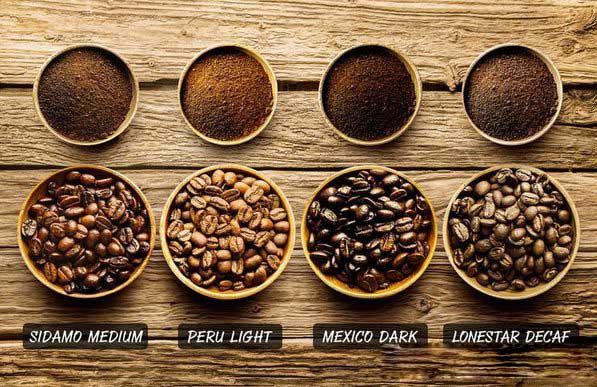The comprehensive guide for coffee roasting process
The so-called coffee roasting means that by heating the green coffee beans, a series of physical and chemical reactions occur inside and outside the coffee beans, and in the process, the acid, bitter, sweet and other flavors of coffee are formed, forming the alcohol and color. The process of converting raw beans into dark brown…

The so-called coffee roasting means that by heating the green coffee beans, a series of physical and chemical reactions occur inside and outside the coffee beans, and in the process, the acid, bitter, sweet and other flavors of coffee are formed, forming the alcohol and color. The process of converting raw beans into dark brown raw beans. So, how to roast coffee beans with a commercial coffee roasting machine? What is the specific coffee roasting process?
What are the factors that affect the effect of coffee roasting?
In addition to uncontrollable factors such as coffee beans and weather, other influencing factors that need artificial adjustment to include: adjustment of firepower, whether the damper is cleaned, and the use of gas (or gas).
Whether the quality of coffee roasting is stable requires the roaster to record in detail the temperature of each bean, the weight of the beans, the temperature of the beans, the temperature of the boiler per minute, the dehydration point, the bursting point, the burst time, baking time, dehydration rate, temperature rise rate, etc. (the more detailed the better).

Various small changes in temperature and heat during coffee roasting with a coffee roasting machine can change the taste of the beans. In addition, different beans have different characteristics, and baking is a task that requires rapid operation in a short period of time, so the operator is required to accurately budget the baking process during the baking process and continue to detect to achieve good results.
The detailed coffee roasting process with the coffee roasting machine
- Raw beans processing. Each coffee cherry contains two raw beans. At this time, the aroma is still deep inside, waiting to be discovered. Raw beans contain a large amount of chloric acid, which will gradually disappear with the baking process, releasing familiar and pleasant fruit acids such as acetic acid, citric acid, and malic acid contained in wine. When the coffee is roasted just right, these wonderful sour tastes can be moderately displayed, otherwise, if roasted too much, they will be completely hidden.
- When roasted for 5-7 minutes, the beans begin to release moisture, transforming from light green to orange, exuding a unique aroma like creamy roasted vegetables.
- Light baking. When the bean clams make the first beep, the volume expands at the same time, and the color changes to a delicious cinnamon color, so it is also called cinnamon roast or half-city roast. At this stage, acidity dominates the flavor of lightly roasted beans of the coffee roasting machine, and the texture and mouthfeel have not been fully exerted, so it is generally used as canned coffee.
- Middle-b When roasted for 10-11 minutes, the coffee beans appear elegant brown. New Yorkers like to use roasted coffee beans at breakfast, plus fragrant milk and sugar, to kick off every day. Therefore, this roasting method is also called breakfast roasting or city roasting. Medium roasting can preserve the original flavor of coffee beans and can release the aroma moderately. Therefore, single roast coffee such as Blue Mountain coffee, Colombian coffee, Brazilian coffee, etc., choose this roasting method.
- When roasting for 12-16 minutes in the commercial coffee roaster, the oil of coffee beans starts to surface, and the beans are burnt to a rich dark brown, which is called full-city roasting. Some people think that the sour, sweet and bitter taste of the coffee at this time will reach the perfect balance.

